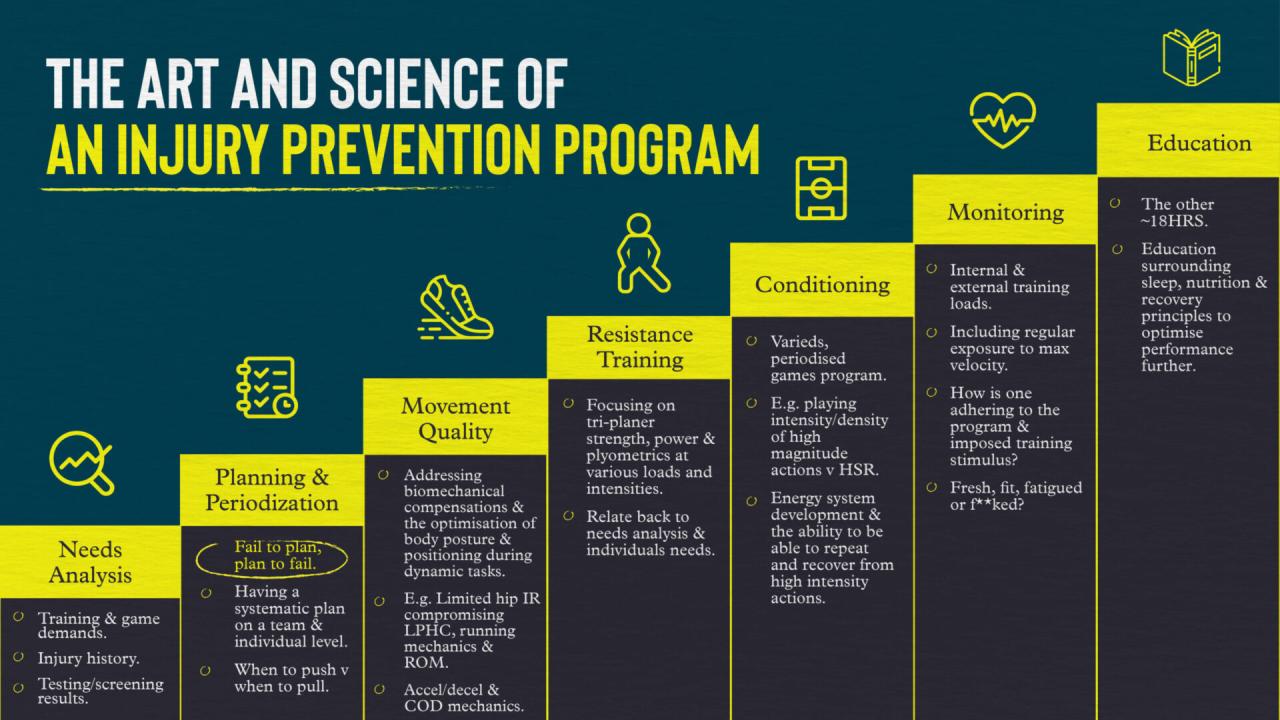Embark on a journey through the realm of injury prevention through architectural design, where safety and innovation converge to shape our built environment. This exploration delves into the crucial role architects play in crafting spaces that prioritize safety and well-being, ultimately redefining the concept of design with a purpose.
Delve into the intricate relationship between ergonomics and architectural design, uncovering the transformative power of thoughtful planning and construction in safeguarding against potential hazards.
Overview of Injury Prevention Through Architectural Design

Injury prevention through architectural design is the practice of creating built environments that prioritize safety and reduce the risk of accidents or injuries. Architects play a crucial role in designing spaces that not only look aesthetically pleasing but also consider the well-being and safety of the people who will use them.
Importance of Considering Safety in Architectural Planning
Architectural planning that focuses on safety is essential to ensure the well-being of occupants and users of a building. By incorporating safety measures into the design, architects can help prevent accidents and injuries that may occur due to architectural hazards.
This proactive approach can ultimately save lives and reduce the economic burden associated with injuries.
- Proper lighting, non-slip flooring, and clear signage can help prevent slips, trips, and falls.
- Well-placed handrails, ramps, and elevators can improve accessibility for individuals with mobility challenges.
- Fire safety measures such as smoke detectors, fire exits, and fire-resistant materials can save lives in case of emergencies.
Role of Architects in Creating Spaces that Prioritize Injury Prevention
Architects have a responsibility to design spaces that prioritize safety and well-being. By considering factors such as ergonomics, accessibility, and building codes, architects can create environments that are not only functional and visually appealing but also safe for occupants. Collaboration with other professionals such as engineers and safety experts can further enhance the effectiveness of injury prevention measures in architectural design.
- Conducting thorough risk assessments and incorporating safety features in the initial design phase can help prevent accidents before they occur.
- Regular maintenance and inspections of buildings can ensure that safety measures remain effective over time.
- Continued education and training on safety standards and best practices can empower architects to make informed decisions that prioritize injury prevention in their designs.
Ergonomics and Design Considerations
Ergonomics plays a crucial role in shaping architectural design to prevent injuries. By understanding how people interact with their environment, architects can create spaces that promote safety and well-being. Incorporating ergonomic principles into the design process can significantly reduce the risk of injuries and enhance overall comfort for occupants.
Ergonomic Design Features for Safety
- Adjustable furniture: Providing adjustable chairs, desks, and workstations allows users to customize their setup to fit their unique body dimensions, reducing strain and discomfort.
- Proper lighting: Adequate lighting levels help prevent eye strain and reduce the risk of trips and falls by ensuring clear visibility in all areas of the building.
- Non-slip flooring: Using materials with non-slip properties in high-traffic areas such as corridors and staircases can prevent slips and falls, especially in wet conditions.
- Accessible layout: Designing spaces with clear pathways, accessible ramps, and ergonomic handrails improves mobility and reduces the risk of accidents for individuals with disabilities or limited mobility.
Impact of Ergonomic Furniture and Layout
Ergonomic furniture and layout choices can have a significant impact on reducing the risk of injuries in buildings. By incorporating ergonomic principles into the design of furniture and spatial layout, architects can create environments that support the natural movements and comfort of occupants, ultimately enhancing safety and well-being.
Building Layout and Safety Measures

Building layout plays a crucial role in injury prevention as it can impact the flow of people, accessibility, and overall safety within a structure. Architects and designers must consider various safety measures to ensure the well-being of occupants in different types of buildings.
Integration of Safety Measures
- Clear pathways and exits to ensure smooth evacuation in case of emergencies.
- Proper lighting to enhance visibility and reduce the risk of trips and falls.
- Non-slip flooring materials in areas prone to moisture or spills to prevent accidents.
- Handrails and grab bars in areas like staircases and bathrooms to assist with stability and support.
Architectural Approaches for Safety
- In healthcare facilities, the design may incorporate rounded corners and soft edges to minimize the risk of injuries.
- In schools, playgrounds are designed with impact-absorbing surfaces to cushion falls and reduce the severity of injuries.
- In office buildings, ergonomic furniture and adjustable workstations are integrated to promote good posture and reduce musculoskeletal issues.
Materials and Construction Techniques
When it comes to injury prevention in architectural design, the choice of materials and construction techniques plays a crucial role in ensuring the safety and well-being of occupants. By selecting the right materials and employing innovative construction methods, architects can create structures that are not only safe but also sustainable and environmentally friendly.
Impact of Materials on Injury Prevention
The materials used in construction can greatly influence the safety of a building. For example, using durable and fire-resistant materials can reduce the risk of structural failures and fires, protecting occupants from harm. Additionally, materials with good acoustic properties can help create a comfortable and peaceful environment, reducing the likelihood of stress-related injuries.
Innovative Construction Techniques
Advancements in construction techniques have led to the development of innovative methods that enhance building safety. For instance, the use of prefabricated components can streamline the construction process, minimizing the time workers spend on-site and reducing the risk of accidents.
Similarly, the incorporation of seismic retrofitting techniques can strengthen older buildings, making them more resilient to earthquakes and other natural disasters.
Sustainable Materials for Safety and Environmental Consciousness
Architects are increasingly turning to sustainable materials that not only promote safety but also align with environmental consciousness. Materials such as recycled steel, bamboo, and reclaimed wood not only contribute to a safer built environment but also reduce the carbon footprint of construction projects.
By prioritizing sustainable materials, architects can create buildings that are both safe for occupants and eco-friendly.
Conclusion
In essence, injury prevention through architectural design emerges as a cornerstone of modern construction, blending form and function seamlessly to create environments that not only inspire but also protect. As we navigate the intricate tapestry of safety measures and design considerations, it becomes evident that the future of architecture lies in a harmonious fusion of aesthetics and security.
Essential Questionnaire
How can architectural design contribute to injury prevention?
Architectural design can influence safety by incorporating features like non-slip flooring, proper lighting, and clear signage to prevent accidents.
What are some common ergonomic design features that enhance safety in buildings?
Ergonomic chairs, adjustable desks, and well-placed handrails are examples of features that promote safety in buildings.
How do sustainable materials contribute to both safety and environmental consciousness in architectural design?
Sustainable materials like recycled steel and energy-efficient glass not only enhance safety but also reduce the environmental impact of construction projects.










